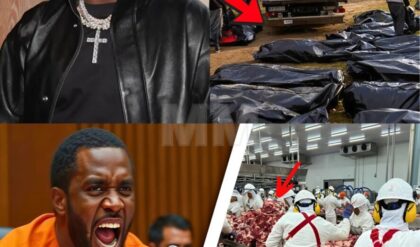Blockbuster Trade Shakes NBA: Carl Anthony Towns to the Knicks and Dame Lillard to the Bucks
In a shocking turn of events, the NBA landscape experienced a seismic shift with two major trades involving championship contenders from both conferences. The Minnesota Timberwolves are finalizing a deal to send star center Carl Anthony Towns to the New York Knicks in exchange for Julius Randle, Dante DiVincenzo, and a future first-round draft pick. Meanwhile, the Milwaukee Bucks have landed perennial All-Star Damian Lillard in a three-team deal, pairing him with two-time MVP Giannis Antetokounmpo. This whirlwind of player movement marks one of the most intriguing offseasons in recent NBA history, with implications that stretch beyond the basketball court.
New York Knicks: Rising Contender in the East
The acquisition of Carl Anthony Towns positions the Knicks as one of the scariest teams in the Eastern Conference, rivaling powerhouses like the Boston Celtics. Towns, a versatile offensive big man, joins a Knicks roster that has already made significant improvements in the offseason. His ability to stretch the floor, dominate in the post, and provide rim protection makes him an ideal fit for the modern NBA. The Knicks, long seen as underachievers, are now on the brink of title contention, especially with Towns joining the ranks.
For Minnesota, the trade seems perplexing at first glance. Towns has been the face of their franchise for years, and his departure marks the end of an era. However, the move makes sense financially. Towns’ massive four-year contract extension, which kicks in this season and pays him $55 million annually, places a heavy burden on the Timberwolves’ payroll. By acquiring Julius Randle, who will make $30 million this year, Minnesota sheds salary and avoids the penalties associated with the NBA’s new second “apron” rules, which restrict teams from exceeding a certain salary threshold.
While Randle’s fit with the Timberwolves may raise some eyebrows, there is potential for success. If Randle embraces a role similar to Nas Reid’s, who won Sixth Man of the Year for Minnesota last season, the team could find a way to make this trade work. Reid thrived in his role off the bench, providing energy, scoring, and rebounding. Randle, known for his versatility and scoring ability, could bring similar production to Minnesota, albeit with a higher profile.
The Second Apron: A New Era in NBA Roster Management
One of the underlying factors driving these trades is the NBA’s new second apron rule, part of the league’s collective bargaining agreement aimed at curbing excessive spending by teams. The second apron sets a hard salary cap that teams are reluctant to cross, as doing so results in severe penalties, including loss of draft picks and restrictions on signing players. This rule has forced teams to be more mindful of their financial flexibility and future roster construction.
Prior to the September 27 trade deadline, only four teams were projected to exceed the second apron for the upcoming season, with Minnesota being one of them. The Timberwolves were set to pay their trio of Karl-Anthony Towns, Anthony Edwards, and Rudy Gobert over $135 million. This hefty financial commitment left the team with little flexibility to improve their roster or retain key players in the future.
By trading Towns for Randle and DiVincenzo, Minnesota avoids the second apron penalties while gaining flexibility for future moves. This trade signals a shift in the Timberwolves’ strategy, as they prioritize financial flexibility over retaining top-tier talent. It also highlights the growing importance of salary management in the NBA, where teams must strike a balance between competing for championships and avoiding the harsh penalties of the second apron.
Milwaukee Bucks: All-In for a Championship with Damian Lillard
The Milwaukee Bucks, on the other hand, are going all-in on their championship aspirations by acquiring Damian Lillard from the Portland Trail Blazers in a blockbuster three-team trade. Lillard, one of the league’s most lethal scorers and clutch performers, joins forces with Giannis Antetokounmpo in what could be one of the most formidable duos in NBA history. The Bucks are banking on this pairing to deliver another championship to Milwaukee, especially after falling short in recent playoff runs.
The Bucks’ aggressive move to acquire Lillard can be traced back to comments made by Giannis earlier in the offseason. In August, Giannis made it clear that he would not commit to a contract extension unless he was convinced the team was fully dedicated to contending for a championship. His comments sent shockwaves through the organization, prompting the Bucks to act swiftly. Just a month later, the team made the bold move to trade for Lillard, signaling their commitment to building a title contender around their superstar.
The acquisition of Lillard also played a significant role in Giannis’ decision to sign an early extension with the Bucks. Initially hesitant, Giannis quickly changed his tune after the trade, agreeing to stay in Milwaukee until at least 2027. The Bucks now have a short window to capitalize on the Giannis-Lillard duo, as the two superstars are both in the prime of their careers but face growing competition in an increasingly tough Eastern Conference.
Concerns for Milwaukee: Aging Roster and Injury Woes
Despite the excitement surrounding the Lillard trade, there are concerns about the Bucks’ roster. While Lillard’s offensive prowess is unquestionable, he is 34 years old and has been dealing with injuries in recent seasons. Additionally, Milwaukee’s roster is aging, with key players like Khris Middleton and Brook Lopez entering the twilight of their careers.
Middleton, in particular, is a major question mark. Since suffering a knee injury in 2022, Middleton has struggled to stay healthy, playing in only 88 games over the past two seasons. He recently underwent surgeries on both ankles, further complicating his return to form. The Bucks are heavily reliant on Middleton’s production, and his uncertain health status raises doubts about Milwaukee’s ability to compete at the highest level.





